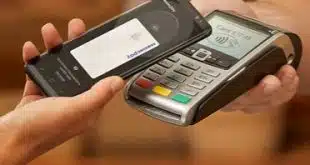Discover Financial Service’s Pulse subsidiary last week became the latest debit network to license Visa Inc.’s so-called common application identifier (AID) on soon-to-be-issued Europay-MasterCard-Visa (EMV) chip debit cards. This latest agreement means Visa’s common AID will be enabled on cards that account for nearly 90% of U.S. PIN-debit transactions.
The deal also provides further evidence that EFT networks want to get moving on the needed behind-the-scenes work so that their bank and credit union members can issue chip cards by an important EMV deadline looming in October 2015, even though not all the concerns about governance of EMV technology and related issues that they expressed last year have been resolved.
Under the new agreement, Pulse’s 4,000 financial-institution members will be able to issue EMV chip cards with, at a minimum, the Visa and Pulse logos. “Pulse has always been an active advocate for a simple and efficient debit solution that includes a common AID,” George Danforth, vice president of emerging products at Houston-based Pulse, tells Digital Transactions News. “This delivers on that.”
Danforth also says the agreement will support the several cardholder verification methods, including PIN entry, PIN-less, signature, or no authentication. “It’s very important, and it’s been achieved, to support all the different cardholder verification methods,” he says.
In addition to Pulse, Visa has announced common AID licensing deals with the Accel and Star PIN-debit networks, which are owned by processors Fiserv Inc. and First Data Corp., respectively. Visa and MasterCard Inc., which respectively own the Interlink and Maestro debit networks, also mutually enable each other’s AIDs. Including Interlink and Maestro, Visa’s common AID network partners accounted for 89% of U.S. PIN-debit transactions in 2012, according to a study released in October of that year by Maynard, Mass.-based Mercator Advisory Group Inc.
The biggest remaining EFT network that has yet to announce a deal with Visa is NYCE, a subsidiary of processor Fidelity National Information Services Inc. (FIS). Mercator estimated NYCE’s 2012 market share at 10%. All of the small remaining networks had a combined 1% share of the PIN-debit market, according to the report.
“We’ve been talking with all these networks in parallel,” says Kimberly Lawrence, senior vice president of global corporate initiatives at Visa. “There’s been a cadence of adoption, and we expect that cadence to continue.”
Danforth says he can’t disclose if Pulse is talking with MasterCard, which so far has announced a common AID deal only with Accel, but he also says, “We’re hoping to get it done with MasterCard as well.”
The recent licensing deals are the result of the fact that Visa and MasterCard are the major owners of the EMV technology, and the peculiarities of the Durbin Amendment in 2010’s Dodd-Frank Act. The Federal Reserve Board’s 2011 rule implementing the amendment requires that merchants have a choice of at least two unaffiliated networks on which to process a debit card transaction. Providing such routing choice is more complicated with EMV chip cards than with mag-stripe cards.
Visa, MasterCard, and a group of 10 regional EFT networks proposed changes last year that would enable processors to route EMV transactions while allowing at least two network brands to co-exist on the chip, relying on a common AID. But until recently, the 10 EFT networks opposed the international networks’ solutions, arguing they didn’t offer equal governance, and a number of them formed the Debit Network Alliance (DNA) to advocate for their interests.
The DNA hasn’t announced an agreement with Visa and MasterCard, and the EFT networks apparently are concluding they may not need one, at least in the near term. “We’ve seen a lot of them kind of peel off from the united front,” says Julie Conroy, a senior analyst at Boston-based Aite Group LLC who is following the U.S. EMV conversion.
Conroy notes that the common AIDs are interoperable and the recent agreements call for no revenues to flow back and forth among the networks. “Now I think we have a lot more clarity on that part,” she says, adding that the pacts will enable software coders and others to begin working on the technicalities of mass chip card adoption.
Danforth says the DNA has “been instrumental in driving the development, in helping drive the industry toward a competitive AID solution.” The group, he says, will still play “a major role” as related chip-card issues come to the fore, including mobile payments and transaction tokenization. “Ongoing collaboration, and [a] voice, is still going to be important going forward.”
Lending some urgency to resolving the chip interoperability issue is the spate of recent retailer data breaches, which have quashed hopes that Visa and MasterCard might postpone their planned October 2015 liability shift. That shift will make the party in a point-of-sale card transaction that couldn’t support EMV responsible for any resulting counterfeit fraud. “I definitely think that the merchant breaches have put a bright spotlight on all of the industry players in making sure we’re doing our part,” says Danforth. “EMV has been a component in that.”




